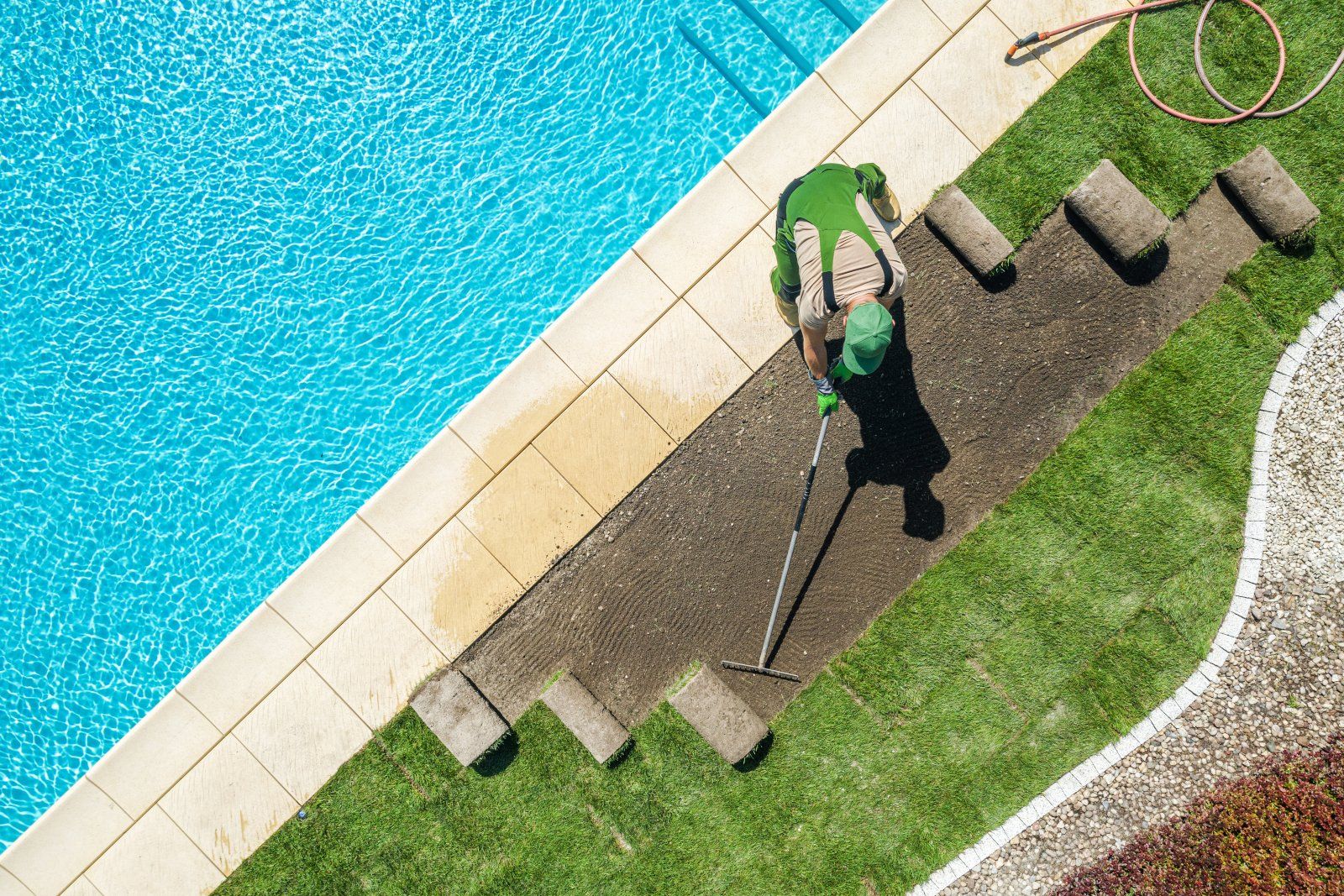Our guide to top-tier turf care
Keep the grass greener on your side with our easy and effective turf care tips
If you’ve had some fresh new turf installed recently, your first thought may have been ‘wow this looks so green and healthy!’ But how do you keep it that way?
You can rest easy, because we’re here to give you all the turf care advice you need to keep your new turf healthy, shiny, green, and happy. We’re going to cover when and how to water, mow, and fertilise new turf - and go over some basic pest and weed control principles for new turf. Let’s get into it!
When can you water new turf?
You should water new turf as soon as possible after it’s been laid, and no more than 15 minutes after the first section’s down. New turf is extremely thirsty, so for the first four or so weeks you should water new turf lightly three times a day, to ensure it’s always damp and hydrated.
Once your turf is established and its roots have started making their new home in the ground, you can ease up on the daily waterings but will still need to follow a fairly strict schedule to maximise your new turf’s chances of thriving.
From week four onwards, you can slowly start dialling down the number of times a day you water new turf, while gradually increasing the amount of water you give it each time. Try working your way down to one deep water per day, then to one per every second day, and finally to one extended (one- or two-hour) water per week.
If you’re patient and persistent with your watering schedule, your new turf should have no issues developing a strong and healthy root system in the soil below it. However, if you notice dry, discoloured, or wilting leaves, take that as a sign that your lawn needs a big ol’ drink, regardless of where you’re at with your watering schedule.
When to mow new turf
You shouldn’t mow your new turf until its roots are fully established, which can take up six to eight weeks in some cases. You can check your turf’s progress by giving it a gentle tug; if it gives, it’s definitely not ready to be mowed. If it sticks firm to the soil, you’re well on your way to a healthy lawn.
Once you’re confident that your turf’s roots are well and truly established, you can mow it for the first time. Here are some tips for mowing your new turf without risking damage to the root system:
- Make sure your mower blades are as sharp as possible to stop them from mangling the leaves instead of cutting them
- Adjust your mower’s height so that it’ll only take off approximately the top third of the leaf - any more and you risk causing stress to the leaf and impeding photosynthesis
- Only mow new turf if it’s completely dry - attempting to mow it after a watering session won’t go well for you
- Don’t be scared to leave the grass box off! Grass clippings add nitrogen back to the soil, reducing the need for additional fertiliser by as much as 25%
The question of when to mow new turf can be a contentious one, but if you follow our tips you can rest easy knowing you’re not running the risk of damaging your new turf by mowing it prematurely.
When can you start fertilising new turf?
When fertilising new turf, you should ideally add a pre-turf fertiliser to the soil before laying any turf, and then when you first water the turf, add a liquid fertiliser containing seaweed to stimulate root growth.
From that point, fertilise your turf either four to six weeks after it was laid, or if you notice a drastic colour change in your turf. Happy, healthy grass should have a rich, dark green colour, so if it’s looking a little pale you might need to give it a feed.
However, check that your turf isn’t simply dehydrated first - excessively fertilising new turf can burn your grass, and potentially kill your entire lawn. You may also want to consider mulching your new turf at some point, as this helps the soil below soak up and retain crucial nutrients.
If you’ve never mulched a lawn before, you might want to take a look at:
- Our how-to guides section, which includes a guide on how to apply mulch
- Our range of soils, composts, and fertilisers, available for both bulk and retail purchase
- Our FAQs section, which contains some handy information regarding how mulch works and the frequency with which you should be applying it
Weed control and dealing with lawn bugs
How you choose to deal with weeds and pests depends on your personal views regarding sustainability and nature. Some lawn owners will stop at nothing to make sure their yard is completely free of weeds and pests, utilising whatever pesticides and weed killers they deem necessary to their pest and weed control strategy.
Others take a more holistic view and allow weeds and pests to exist in their garden as they would in the wild. This can help to preserve important ecosystems and encourage biodiversity over monoculture - which can be vital to ensuring the health and continued existence of local flora and fauna.
If you do decide to take the exterminatory route, make sure that any pesticides or weed killers you’re using are safe, and won’t compromise the health of your new turf.
Keep in mind that for some prominent lawn bugs, such as the lawn grub, cultural control rather than chemical control is the way to go. This involves seeking out their telltale soft white cocoons around your property and disposing of them by either brushing or hosing them away. This will prevent the grubs from reproducing and keep your lawn safe from a hungry horde of lawn grubs.
Partner with Waratah Supplies for your turf care product needs
Here at Waratah Supplies, we can handle your turf installation and turf care product needs from start to finish. We offer
a range of different grasses in turf form, all of which are suitable for Sydney’s climate and favoured by home gardeners and landscapers for their hardiness.
Give us a call today and we can help you figure out which grass is best for your yard, and then get it laid down to bring you one step closer to the perfect lawn of your dreams!


